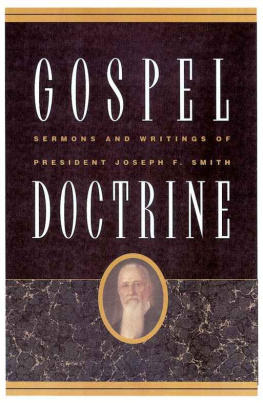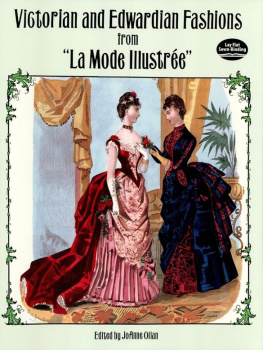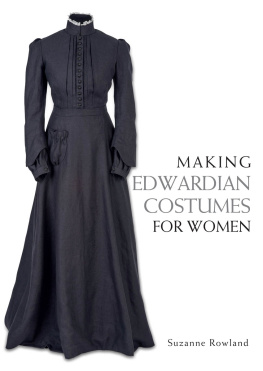The Edwardian Detective, 1901-1915
In memory of Gilbert Highet
First published 2000 by Ashgate Publishing
Reissued 2018 by Routledge
2 Park Square, Milton Park, Abingdon, Oxon OX14 4RN
711 Third Avenue, New York, NY 10017, USA
Routledge is an imprint of the Taylor & Francis Group, an informa business
Copyright Joseph A. Kestner, 2000
The author has asserted his moral right under the Copyright, Designs and Patents Act, 1988, to be identified as the author of this work.
All rights reserved. No part of this book may be reprinted or reproduced or utilised in any form or by any electronic, mechanical, or other means, now known or hereafter invented, including photocopying and recording, or in any information storage or retrieval system, without permission in writing from the publishers.
Notice:
Product or corporate names may be trademarks or registered trademarks, and are used only for identification and explanation without intent to infringe.
Publishers Note
The publisher has gone to great lengths to ensure the quality of this reprint but points out that some imperfections in the original copies may be apparent.
Disclaimer
The publisher has made every effort to trace copyright holders and welcomes correspondence from those they have been unable to contact.
A Library of Congress record exists under LC control number: 99036280
ISBN 13: 978-1-138-63398-8 (hbk)
ISBN 13: 978-1-315-21230-2 (ebk)
This book could not have been written without the cooperation of many individuals, libraries and institutions. The author wishes to express his gratitude for the invaluable assistance rendered by these individuals and institutions.
The author is grateful to Austin J. McLean, former Curator of Special Collections at the Wilson Library of the University of Minnesota, for providing access to The Mary Kahler and Philip S. Hench Arthur Conan Doyle Collection at the University. The author also wishes to thank Catherine Cooke, Chief Librarian of The Sherlock Holmes Collection at the Marylebone Library, City of Westminister, London, for access to its outstanding collection of materials. The resources of the Tage la Cour Collection and the Stafford Davis Collection in the Special Collections division of McFarlin Library of the University of Tulsa have been most important. The author thanks Lori N. Curtis, Curator, for her invaluable assistance. Members of the Afghanistan Perceivers of Tulsa have provided stimulating conversation on many subjects connected with this project. For their advice and support, the author wishes to thank Garrick Bailey, Thomas A. Home, Joseph J. Wiesenfarth, John Halperin, Gordon O. Taylor, Robert E. Spoo, Carl R. Woodring. Sandra L. Vice, Mary Jo Lindsay and Joseph A. Kestner, Jr, Lillian B. Norberg, Joanne Shattock, Lynn M. Alexander and Bernard Duyfhuizen.
The author wishes especially to thank Monique Colahan for permission to reproduce Colin Colahans portrait Dr John Dale (National Gallery of Victoria, Melbourne) on the jacket.
The author wishes to thank Blake Richard Westerlund for his invaluable assistance in the preparation of the initial draft of this book.
The author is most grateful to Allen Henry Bauman for his precision, advice and assistance during the preparation of the final manuscript.
The author acknowledges the continuing stellar support of Alec McAulay, Editor at Ashgate, whose friendship and expertise have been invaluable.
Caroline Cornish, Editor at Ashgate, has been a superb source of insight, expertise, inspiration and advice at every stage of development of this project.
Anna H. Norberg has been a strong and loving source of support during the writing of this book.
Sources
Extracts from:
The Four Just Men (1905; 1984 edition) by Edgar Wallace, The Red Thumb Mark (1907; 1986 edition) by R. Austin Freeman and The Complete John Silence Stories (1908; 1997 edition) by Algernon Blackwood are reproduced by permission of Dover Publications Inc.
The Triumphs of Eugene Valmont (1906) by Robert Barr, introduced by Stephen Knight (1997) are reproduced by permission of Oxford University Press. Editorial matter Stephen Knight, 1997.
The Innocence of Father Brown (1911) by G. K. Chesterton are reproduced by permission of A. P. Watt Ltd, on behalf of The Royal Literary Fund.
The Lodger (1913) by Marie Belloc Lowndes are reproduced by permission of the authors estate and Mr Edward F. Northcote.
November Joe: The Detective of the Woods (1913; 1985 edition) by H. V. Hesketh Prichard are reproduced by permission of Greenhill Books, Lionel Leventhal Ltd.
Trents Last Case (1913; 1978 edition) by E. C. Bentley are reproduced by permission of Alfred A. Knopf Inc. and Curtis Brown, New York.
Max Carrados (1914) by Ernest Bramah are reproduced by permission of Methuen Publishing Ltd and A. P. Watt Ltd on behalf of The Estate of the Late W. P. Watt.
The Thirty-Nine Steps (1915) by John Buchan are reproduced by permission of A. P. Watt Ltd on behalf of The Lord Tweedsmuir and Jean, Lady Tweedsmuir.
The Edwardians by Vita Sackville-West 1930 are reproduced by permission of Curtis Brown, London, on behalf of her Estate.
Every effort has been made to trace all the copyright holders of the material included in this book, but if any have been inadvertently overlooked, the publishers will be pleased to make the necessary arrangement at the first opportunity.
Chapter One
The Edwardian Age and the Edwardian Detective
In A Night to Remember, his account of the sinking of RMS Titanic on 15 April 1912, Walter Lord observed that the catastrophe marked the end of an era:
Never again would men fling a ship into an ice field, heedless of warnings, putting their whole trust in a few thousand tons of steel and rivets Nor would icebergs any longer prowl the sea untended And there were no more liners with only part-time wireless. Henceforth every passenger ship had a twenty-four-hour radio watch It was also the last time a liner put to sea without enough lifeboats And it was the end of class distinction in filling the lifeboats A new age was dawning, and never since that night have third-class passengers been so philosophical Never again would first class have it so good. In fact, almost immediately the pendulum swung the other way
It was easier in the old days For the Titanic was also the last stand of wealth and society in the centre of public affection Never again did established wealth occupy peoples minds so thoroughly. On the other hand, never again was wealth so spectacular There was a wonderful intimacy to this little world of the Edwardian rich The Titanic somehow lowered the curtain on this way of living. It never was the same again. First the war, then the income tax, made sure of that With this lost world went some of its prejudices especially a firm and loudly voiced opinion of the superiority of Anglo-Saxon courage
Overriding everything else, the Titanic also marked the end of a general feeling of confidence. Until then men felt they had found the answer to a steady, orderly, civilized life. For 100 years technology had steadily improved. For 100 years the benefits of peace and industry seemed to be filtering satisfactorily through society. In retrospect, there may seem less grounds for confidence, but at the time most articulate people felt life was all right.









